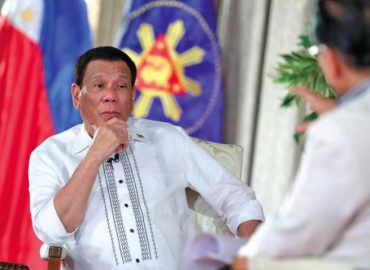.
By Ben O. de Ver, September 21 2018; Philippine Daily Inquirer
https://business.inquirer.net/257620/adb-oks-7-8b-loans-ph-2018-2021
Image Credit to ADB.org
As the Duterte administration prioritizes infrastructure development under its ambitious “Build, Build, Build” program, the Asian Development Bank has increased the share of transport projects in the total loans it is making available for the Philippines in the next four years.
Under ADB’s new six-year country partnership strategy for the Philippines, which the board of the Manila-based multilateral lender approved on Wednesday, some $7.8 billion in loans would be made available for the Philippines from 2018 to 2021. This is equivalent to an average of $1.9 billion yearly and the biggest allocated to the country for a four-year period.
The ADB also rebalanced its lending pipeline, such that transport projects will get the biggest share of 47 percent of the total loans for 2018 to 2021, while 21 percent was earmarked for public sector management projects and 13 percent for finance projects.
To compare, the ADB’s approvals in 2011-2017 totaling $5 billion were mostly for public sector management projects (54 percent); education (15 percent), and finance (12 percent).
The transport sector accounted for only 2.2 percent of the ADB’s loans to the Philippines in the past seven years.
Kelly Bird, ADB country director for the Philippines, told a press conference Thursday that this “historic shift” in the lender’s engagement with the Philippines reflected the Duterte administration’s priority to improve infrastructure.
Joven Z. Balbosa, ADB’s principal country specialist for the Philippines, said that among the projects to be supported under the new strategy were the Bataan-Cavite Long-Span Bridge, the Edsa Greenways, Metro Manila Bridges Project, Metro Rail Transit Line 4 (Ortigas to Rizal), Laguna Lakeshore Road Transport, Malolos-Clark Railway and the North-South Commuter Rail-South Line (Tutuban to Los Baños).
Besides accelerating infrastructure rollout, the ADB’s new strategy for the Philippines will also promote economic development in Visayas and Mindanao as well as investments in people, Balbosa said.
Bird said that, in general, the ADB’s new country partnership strategy for the Philippines was anchored on the government’s 10-point socioeconomic agenda and the Philippine Development Plan 2017-2022, which were aimed at slashing poverty incidence to 14 percent by 2022 from 21.6 percent in 2015.

